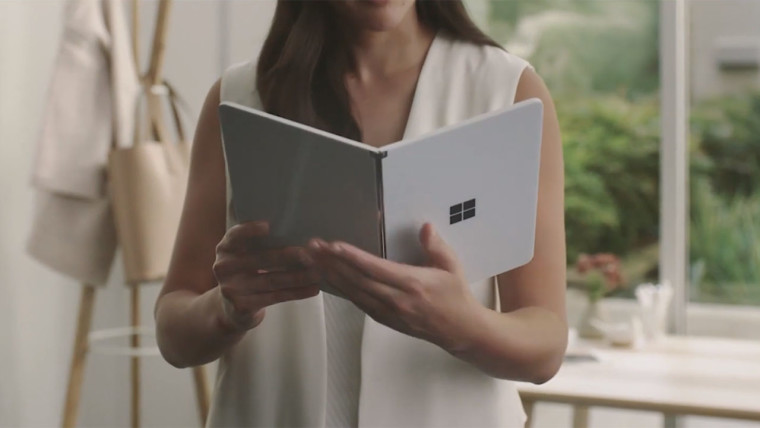
Today marks 1000 days since the announcement of the Surface Neo, a unicorn dual-screen device running a unicorn operating system, Windows 10X. Unlike the Surface Duo, Microsoft failed to bring the Surface Neo to the market. At one point, the company confirmed that it had to kill postpone the Surface Neo indefinitely just to never speak about it again.
Almost three years after the original announcement, more details surfaced about this quirky dual-screen laptop that never reached its customers.
Surface Neo specs
At the time of the announcement, the Surface Neo was an undercooked device, so Microsoft never revealed its full specs. According to sources in the company, the device's two displays had a resolution of 1440 x 1928 pixels each. The base model would offer 128GB of storage and 8GB of RAM paired with the Intel Core i5-L16G7. Interestingly, you can find the same processor in Lenovo's ThinkPad X1 fold.
Microsoft also never mentioned whether the Surface Neo supports LTE, but some of the internal prototypes had a SIM tray cleverly hidden behind the volume buttons. You can spot that SIM card slot in the announcement video.

Heat, Windows 10X, and questionable form-factor
Like the Surface Duo, the Surface Neo was an incredibly thin computer. A 5.6mm device + an Intel CPU = heat. Keeping a 5.6mm thick computer is no easy feat, and, as a result, the Surface Neo was prone to overheating. People at Microsoft say engineers had to keep the device in labs and backstage under fans to prevent overheating.
Another problem Microsoft faced while testing the Surface Neo was its form factor. The device was simply too small and crammed in laptop mode, and the magnetic keyboard "was not very enjoyable or productive to use." It was like a smaller Surface Go with an inconvenient keyboard.
_story.jpg)
Then there was Windows 10X, a spin-off of the traditional Windows 10 Microsoft killed before shipping. The OS did not support "traditional" Windows applications, and Windows RT showed that shipping Windows without its primary capability is not the best idea. As a result, Microsoft had to equip Windows 10X with a virtual machine to run legacy applications. To keep the Surface Neo cool and preserve battery life, Windows 10X put Win32 apps into sleep when not in focus, effectively preventing them from sending push notifications and updating data.
Running a VM to open Win32 apps on a thin, overheating-prone device sounds rough. Even in ideal conditions, the experience of using Surface Neo was frustratingly slow. Add to that overheating problem and get a pretty device you can barely use.

RIP
Even though Microsoft never admitted to killing the Surface Neo (technically, the project is postponed indefinitely), sources claim the device is dead for good. Of course, plans can change in the future, but, for now, do not expect Microsoft to ship the Surface Neo or announce its spiritual successor. As for Windows 10X, Microsoft took some of its features and brought them to the now-year-old Windows 11, which is about to receive its first feature update.
Source: Windows Central




















6 Comments - Add comment